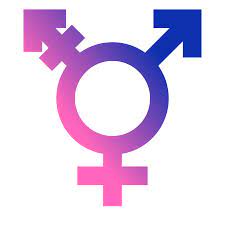In recent years, conversations around gender identity have become more prevalent, leading to a greater understanding of what it means to be transgender. This term encompasses a wide range of identities and experiences, often sparking curiosity and questions. In this article, we’ll break down the meaning of transgender, explore related concepts, and highlight the importance of understanding and supporting transgender individuals.
Understanding Transgender: A Simple Definition Explained
Transgender, often abbreviated as trans, refers to individuals whose gender identity differs from the sex they were assigned at birth. For example, a person assigned female at birth who identifies as male is considered a transgender man. The term serves as an umbrella that encompasses various identities, including non-binary, genderqueer, and genderfluid, highlighting the complexity and diversity of gender experiences.Gender Identity MeaningFace Masculinization Surgery
Understanding transgender identities is crucial in fostering an inclusive society. It’s not just about biology or physical characteristics; it involves deeply personal feelings about one’s own gender. Recognizing and respecting someone’s identity can significantly impact their mental and emotional well-being.
The Spectrum of Gender: Beyond Just Male and Female
When we talk about gender, many people think of a binary system: male and female. However, gender exists on a spectrum, and many individuals don’t fit neatly into these categories. Some people identify as non-binary, meaning they don’t exclusively identify as male or female. Others may identify as genderqueer or genderfluid, indicating a more fluid or changing experience of gender.
This spectrum illustrates that gender is not solely determined by physical attributes or societal expectations. It’s about how individuals perceive themselves and wish to be recognized by others. Embracing this diversity enriches our understanding of human identity and experiences.
Key Terms: Transgender, Cisgender, and More Defined
In discussions about gender, you’ll come across various terms, and it’s essential to understand what they mean. "Cisgender" refers to individuals whose gender identity aligns with the sex they were assigned at birth. In contrast, "transgender" includes anyone whose gender identity differs from their assigned sex, as mentioned earlier.
Other important terms include "gender non-conforming," which describes individuals whose behavior or appearance doesn’t fit traditional gender norms, and "gender dysphoria," a psychological condition where a person experiences discomfort or distress due to a mismatch between their gender identity and assigned sex. Familiarizing yourself with these terms can facilitate more respectful and informed conversations.
The Journey of Transition: What It Can Involve
Transitioning is a personal journey for many transgender individuals and can involve various steps aimed at aligning their external lives with their gender identity. This process may include social transition, such as changing one’s name, pronouns, and clothing, as well as legal transition, which involves updating identification documents to reflect their gender identity.
Some people may also choose medical transition, which can involve hormone therapy or surgeries. It’s important to note that not every transgender person will pursue all or any of these steps. Each journey is unique, and what matters most is that individuals feel comfortable and authentic in their own bodies.
Why Representation Matters for Transgender People
Representation of transgender individuals in media, politics, and everyday life plays a crucial role in shaping societal attitudes and understanding. Positive representation can help normalize transgender identities and experiences, making it easier for people to relate to and accept diverse gender identities.
Furthermore, it allows transgender individuals to see themselves reflected in various roles and scenarios, fostering a sense of belonging and validation. When transgender people are represented authentically, it can also challenge stereotypes and misconceptions, paving the way for greater acceptance and support.
Common Myths About Transgender Individuals Debunked
There are numerous myths surrounding transgender individuals that can perpetuate misunderstanding and discrimination. One common myth is that all transgender people undergo surgery or hormone therapy, which is not true. Many individuals may choose to transition socially or legally without any medical interventions, and that choice should be respected.
Another myth is that being transgender is a mental illness. While some transgender individuals may experience gender dysphoria, being transgender itself is not a disorder. It’s essential to debunk these myths to foster a more informed and compassionate society.
How to Support Transgender Friends and Family
Supporting transgender individuals involves listening to their experiences, respecting their identities, and advocating for their rights. One way to show support is by using their chosen name and pronouns consistently. This simple act can have a profound impact on a person’s mental health and sense of validation.
Additionally, educating yourself about transgender issues helps create a more inclusive environment. This means being open to learning, asking respectful questions, and standing up against transphobia or discrimination when you encounter it. Your support can make a significant difference in the lives of transgender individuals.
Resources for Learning More About Transgender Topics
If you’re interested in learning more about transgender topics, several resources can provide valuable information. Organizations like the Human Rights Campaign, PFLAG, and the Trevor Project offer educational materials, support, and advocacy for transgender individuals and their allies.
Books, documentaries, and online courses can also be excellent sources of information. Engaging with these resources allows for a deeper understanding of the challenges and triumphs faced by the transgender community, helping to cultivate empathy and awareness among allies.
Understanding what it means to be transgender is a vital step in promoting inclusivity and respect for all individuals, regardless of their gender identity. By familiarizing ourselves with the complexities of gender, debunking myths, and supporting those in our lives, we contribute to a more accepting and compassionate world. Let’s continue to educate ourselves and foster a society that celebrates diversity in all its forms.


